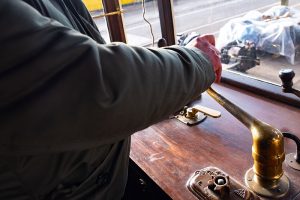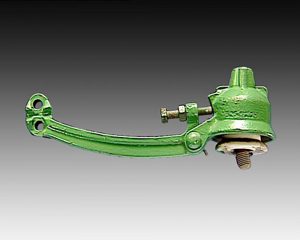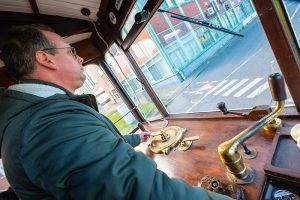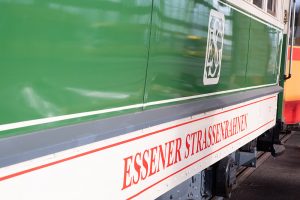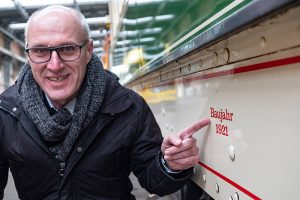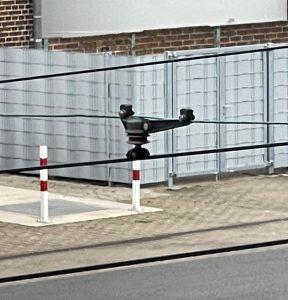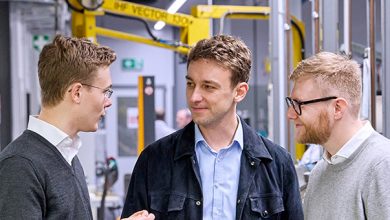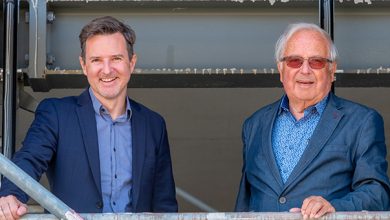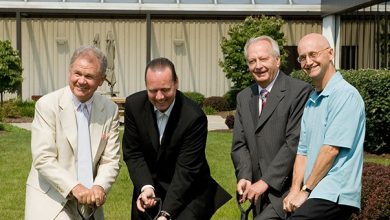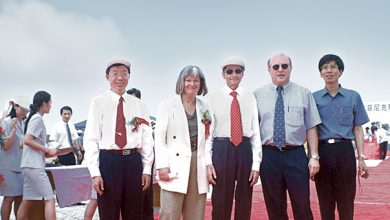In 1923, a small startup in Essen officially began operations. The business revolved around products designed to ensure the electromobility of workers. After visiting the number one customer …
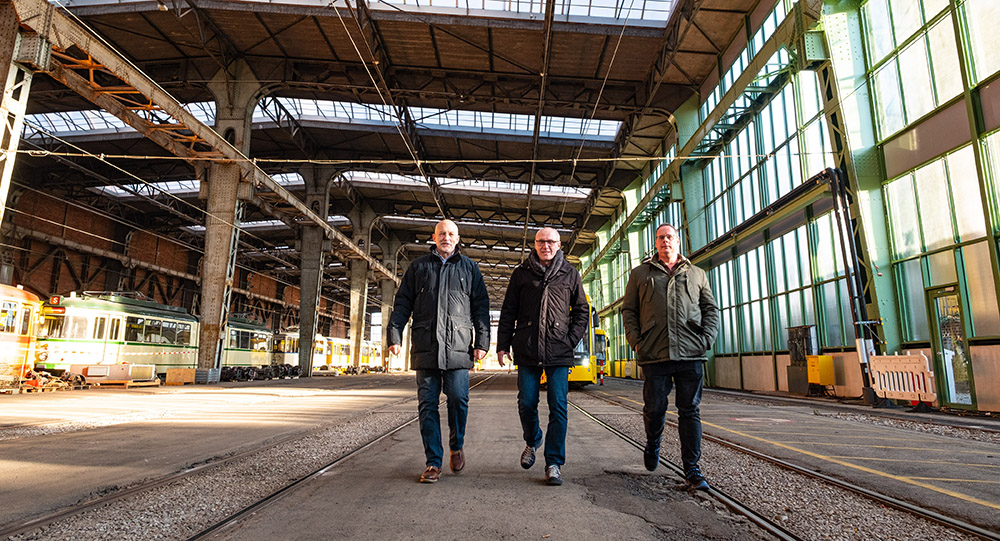
Martin Ruhnau flips the heavy brass drive switch. Slowly, “The Green Vestische” tram starts moving. Railcar 144, now lovingly restored, was used from 1921 to 1940 on community line 19 of Essen’s transportation company Vestische Kleinbahnen. As such, it most certainly came into contact with products from Phönix Elektro- und Industrie-Bedarfsgesellschaft during the company’s founding years. A true witness of the time, even if only humming quietly.
Hugo Knümann started by trading products that made electromobility suitable for the masses. Contact wire clamps are the elements from which the current-carrying overhead lines are suspended, supplying the electric power that the streetcars need to run. On the one hand, they provide the necessary support for the live wire, while on the other hand, they also ensure insulation so that the 750 volts can be handled safely. In our case, they drive the two 37 kW BBC engines on the “Green Vestische”.
Driving while standing
Anyone who wants to put Railcar 144 into operation will immediately understand how the term “control stand” came about. The driver had to remain standing in this oldtimer. Not only is Martin Ruhnau the deputy chairperson of the Verkehrshistorischen Arbeitsgemeinschaft EVAG e.V. club and therefore on a first-name basis with the historic treasures here in the Mülheim streetcar depot. The 51-year-old electrical engineer is also responsible for the technical information systems and communications technology in the streetcars. On the side, he is also a trained streetcar driver who gladly helps out on weekends if a driver is missing in regular service. Today, Andreas Knebel is by his side as his assistant. The graduate engineer is the official representative of Ruhrbahn AG in the Verkehrshistorischen Arbeitsgemeinschaft. So today, he is the official envoy of the first customer, so to speak.
Streetcar as mass transport
Andreas Knebel describes how transportation developed in the booming Ruhr area: “By 1847, Essen was already connected to the railway network. The main focus was on freight transport, because long-distance passenger transport was still uncommon at the time. Horse-drawn buses still dominated the streets in Essen to transport people. However, the Ruhr area was becoming increasingly industrialized. That meant a mass influx of workers with their families. They had to get to the respective mines and factories, which in Essen was mainly Krupp. In August 1893, the Essen streetcar line started running from today’s central station to Altenessen and via Altendorf to Borbeck.”
Martin Ruhnau adds: “The electrification of the streetcars was introduced almost simultaneously in many cities across the Ruhr area. This means that in 2023, we are celebrating the 130th anniversary of these first streetcar lines.” As the 14-ton railcar slowly rolls through the imposing historic hall of the Mülheim streetcar depot, Andreas Knebel explains: “We may not have been the first to start passenger service here with electric streetcars. Berlin started earlier. But we did implement cross-town traffic here right from the start.”

The rail transport company Süddeutsche Eisenbahn-Gesellschaft AG (SEG) was founded in 1895. In the early 1930s, the network of streetcars covered well over 1,000 kilometers from the Ruhr area to the Bergisches Land region. “Passenger transport by car was initially very slow to catch on, unlike in America, for example,” Martin Ruhnau explains the importance of streetcars. “At that time, there was for the most part no other means of transportation. There were hardly any trucks either. The streetcar was the main load-bearing vehicle of the times.”
Peak and decline
After World War II, when a good 90 percent of vehicles and overhead lines had been fully destroyed, the streetcar quickly experienced a new peak. By the mid-1950s, the majority of the lines were back in service. In 1956, the Essen streetcars transported a total of 155 million passengers. However, as Ursula Lampmann’s historical cash log reveals, sales of contact wire fittings no longer played a role for Phönix in the 1950s. The patented RWE terminal block had long since outranked the electromobility line component.
At the same time, the streetcar itself also came under pressure. The bus gave the rail vehicle a run for its money. Especially in the 1970s and 80s, cities were being transformed to “car-friendly cities.” It was considered state-of-the-art to abolish the railway lines or shift them to tunnel traffic, making room for “Germany’s favorite child.” A vast number of secondary lines were discontinued, while the network of electrified transportation was drastically cut back. “Because of damage caused by mining, however, tunnel construction for underground subways here in the Ruhr area was only possible to a limited extent, so a residual above-ground network remained,” says Martin Ruhnau, describing the view of the “streetcar obstacle” at the time.
New awareness
At VHAG-EVAG, though, this period still enjoys the highest standing, because in addition to the “Green Vestische,” several other streetcars from past decades are still waiting for one or the other exit. Since then, the streetcar has become a symbol of identity in the streetscape once again, something that many cities envy about the people of Essen. Together with the repair shops of Ruhrbahn GmbH, the historic fleet of cars is lovingly preserved and kept in running order in the fitting ambience of the Alte Dreherei in Mülheim.
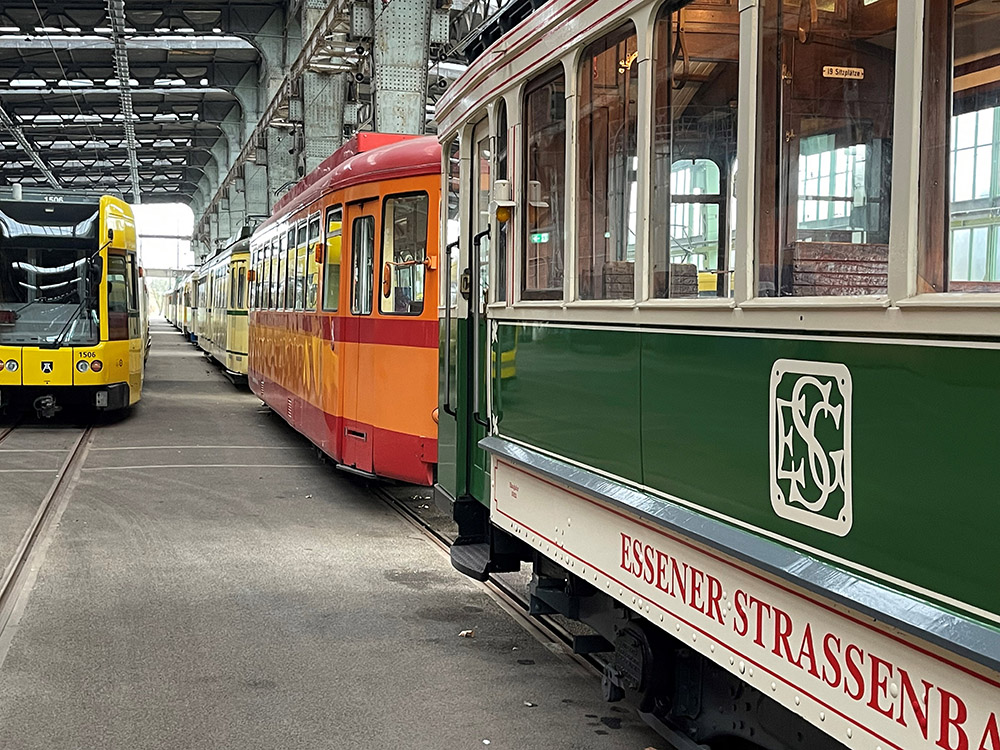

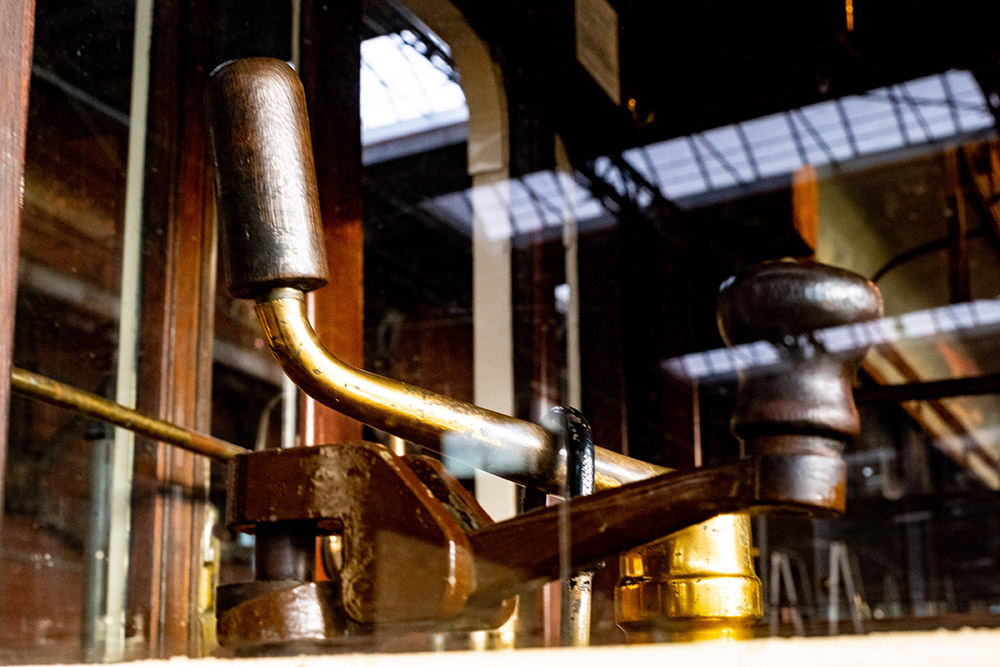
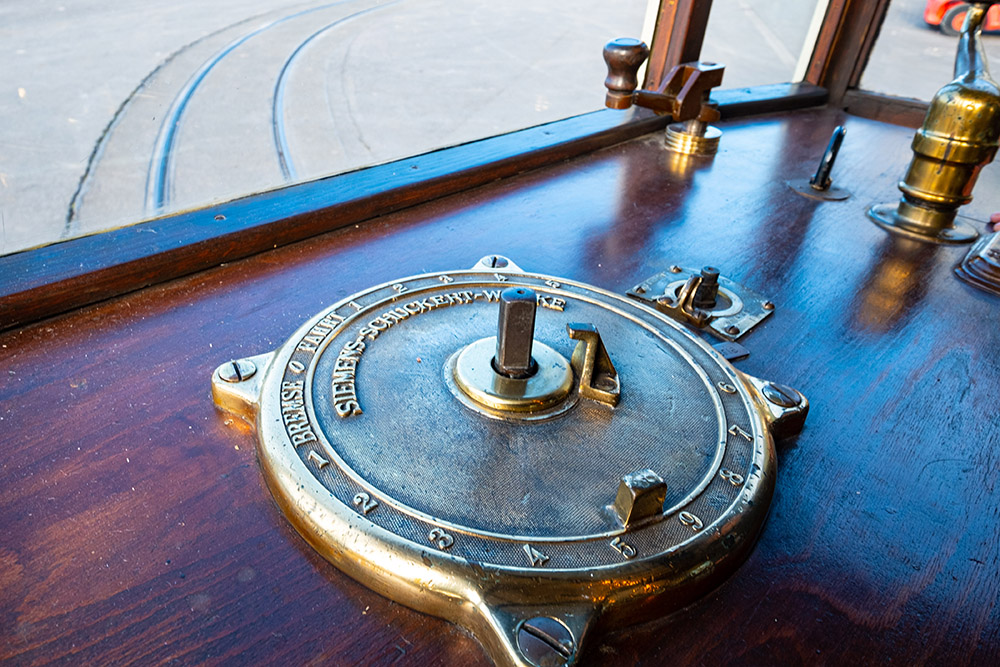
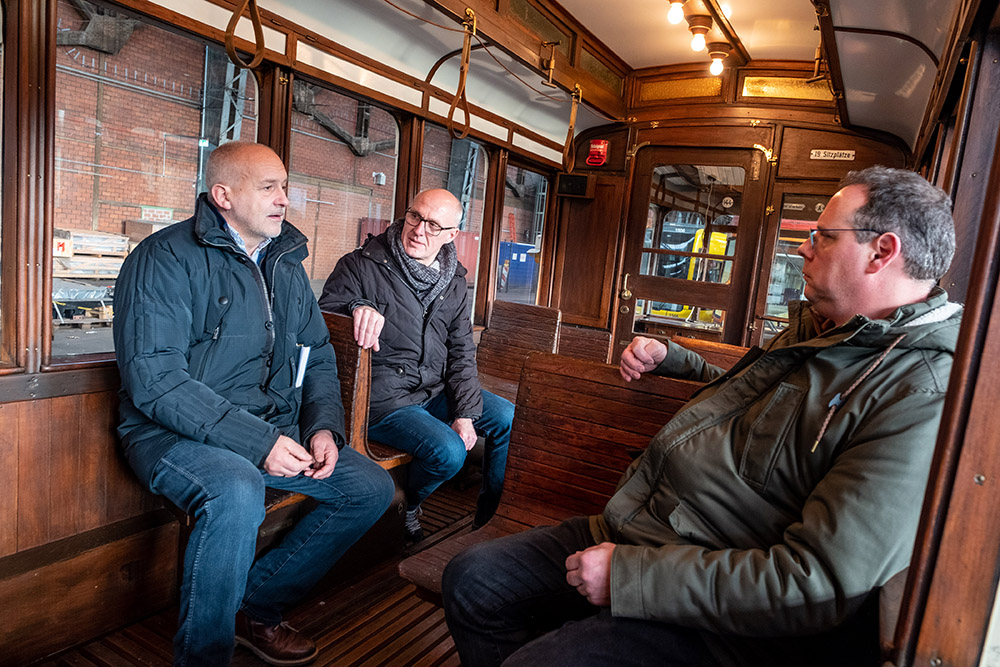

After a round in the vintage streetcar, its biggest fans Ruhnau and Knebel make sure to take a quick look at the yellow NF2. The state-of-the-art low-floor streetcar is not only controlled by the driver in a comfortable back-supporting seat but also offers the latest communication and safety technology. After all, streetcars are far from being considered obsolete in the transportation transition. They are enjoying a whole new appreciation as an electromobile, environmentally friendly, and comfortable option for the advanced local passenger transportation of the future.
“And that is precisely why, i.e. from the present day, we know Phoenix Contact, of course,” our experts smile about the antique contact wire fitting they brought along from their own history collection. “However, as a high-tech company. The fact that you started with such a low-tech product, which is still attached to every street corner here, also surprised us. But at least you’re already electromobile!”
